Welcome to the captivating world of videography! Whether you’re a seasoned photographer eager to explore new horizons or a complete beginner ready to tell your story through moving images, stepping into videography can be a thrilling adventure. Imagine capturing the magic of a sunset in real time, documenting life’s precious moments, or creating your own cinematic masterpiece. In this videography basics guide, we’ll introduce essential basic videography equipment, and share fundamental videography techniques for beginners to help you embark on your creative journey with confidence!
Highlights:
- Videography involves capturing continuous motion and sound, which requires skilled camera use, steady shots, quiet focusing, and proper exposure settings.
- Start with a mirrorless camera and versatile lenses. Consider using a tripod or gimbal, an external microphone, and good lighting equipment.
- Use the Rule of Thirds for composition, smooth camera movements, natural and soft lighting, and manual focus for creative shots. Effective storytelling is key.
- Understanding the basics and having the right gear are crucial. Practice and experimentation will help you create stunning videos.
Understanding Videography Basics
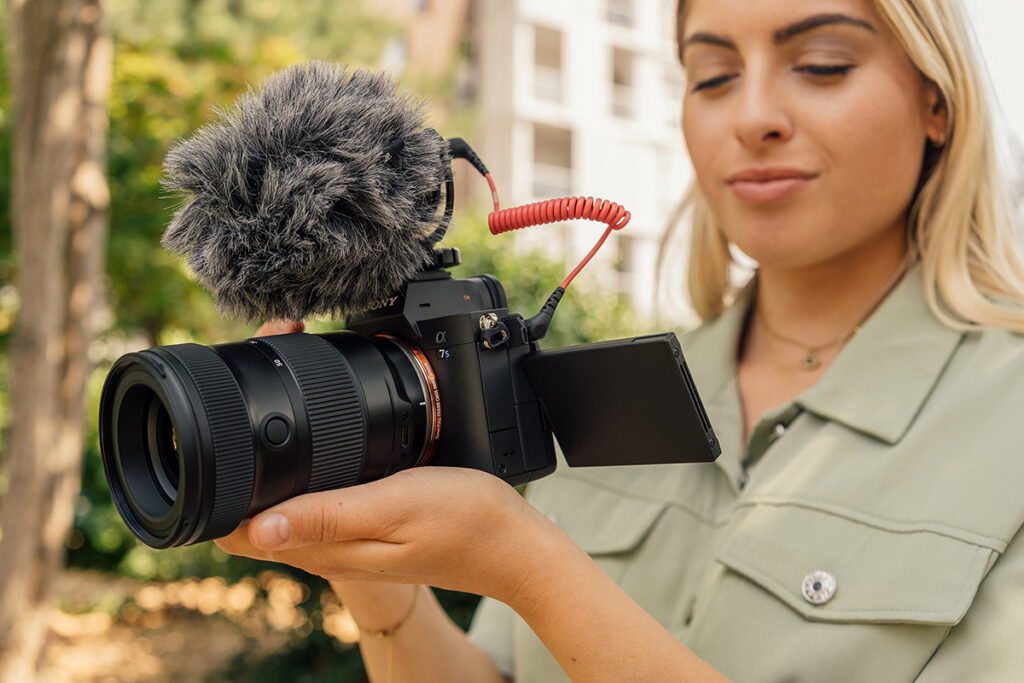
Videography is the art of capturing moving images on electronic media, such as digital cameras. Unlike photography, which focuses on single images, videography involves recording continuous motion and sound. This dynamic aspect requires a slightly different approach and set of skills. Here are some core intro to videography basics to get you started:
- Camera and Lenses: The heart of videography is your camera. Whether you’re using a DSLR, mirrorless, or even a smartphone, understanding your equipment is crucial. One of the key components of a good video is the lens you use. Tamron offers an excellent range of lenses perfect for various videography needs.
- Steady Shots: Keeping your camera steady is vital to producing professional-looking videos. Using tripods, monopods, or gimbals can help achieve this. Additionally, some lenses come with image stabilization to help reduce camera shake. For instance, the Tamron 17-70mm F/2.8 Di III-A VC RXD has built-in Vibration Compensation (VC) that ensures smooth and steady footage.
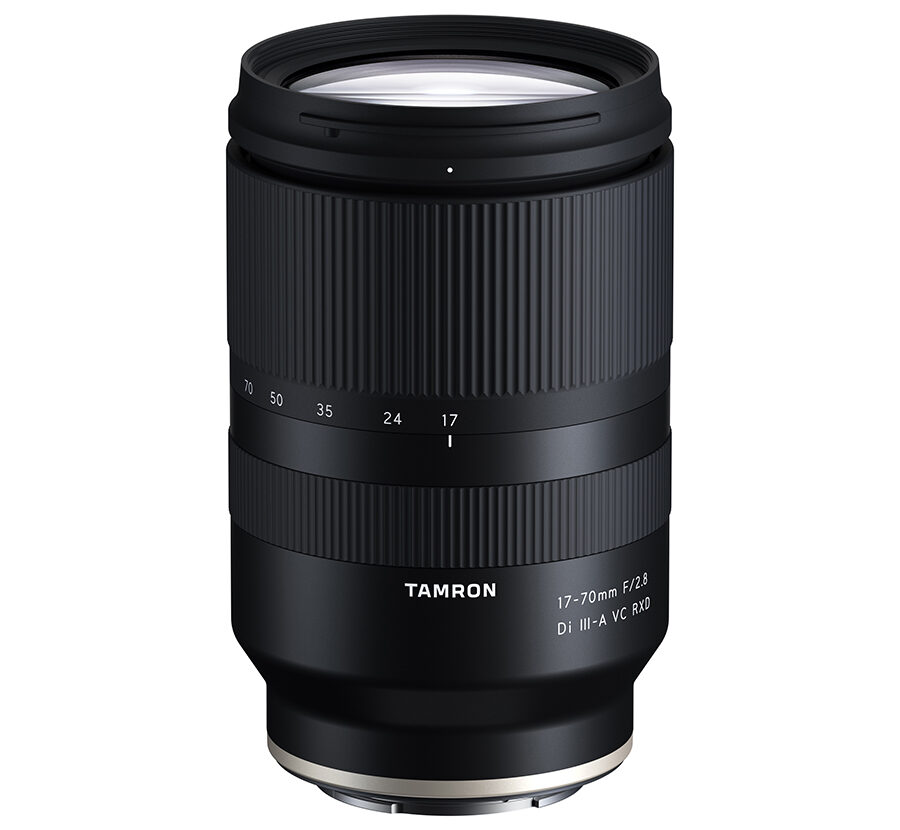
- Focusing: Whisper quiet focusing is essential for videography as noisy autofocus can ruin a good shot. Tamron lenses, such as the 28-75mm F/2.8 Di III VXD G2, are designed with fast and silent focusing mechanisms, making them ideal for capturing high-quality video without distracting background noise.
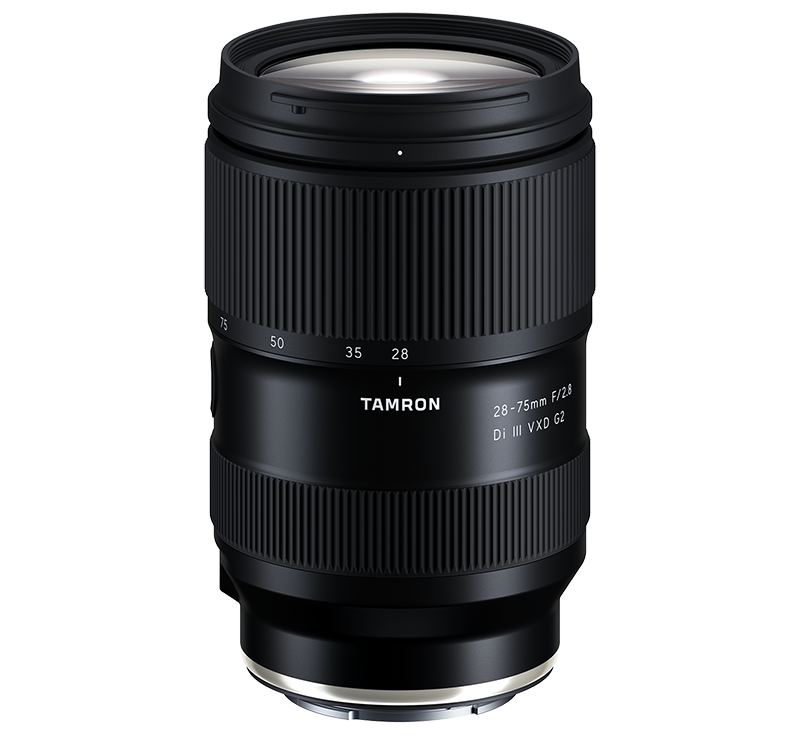
- Exposure Settings: Learning correct exposure settings, including aperture, shutter speed, and ISO, is fundamental in videography. These settings control the amount of light entering the camera, motion blur, and the graininess of the video, respectively. Understanding how to balance these settings will give you better control over your video’s look and feel.
Essential Basic Videography Equipment
Starting your journey into videography requires more than just enthusiasm; having the right gear can make all the difference. Whether you’re trying to capture breathtaking landscapes, intimate family moments, or craft professional content, the right equipment is your best ally. Here’s a comprehensive guide to the essential basic videography equipment you’ll need to set yourself up for success:
Camera
Your choice of camera will depend on your budget and specific needs. Mirrorless cameras are particularly popular among videographers due to their compact size, advanced features, and ability to deliver high-quality video. They offer a balance of portability and performance, making them ideal for both amateur and professional videographers.
Lenses
The lens you choose can significantly impact your video quality, influencing everything from field of view to depth of field. Here are a few highly recommended lenses from Tamron that cater to a variety of videography needs:
- 17-50mm F/4 Di III VXD: This lens offers a versatile zoom range, making it ideal for various shooting scenarios, from capturing wide landscapes to detailed close-ups. Its flexibility makes it a great all-around choice for different types of videography.
- 20-40mm F/2.8 Di III VXD: Perfect for wide-angle shots, this lens is great for vlogging and capturing expansive scenes with excellent clarity. Its wide aperture also allows for beautiful background blur and exceptional low-light performance. And its MOD is ideal for “selfie-video.”
- 28-75mm F/2.8 Di III VXD G2: Known for its exceptional sharpness and flexibility, this lens is excellent for both wide shots and portrait-style videos. Its consistent f/2.8 aperture ensures stunning image quality across the zoom range, making it a favorite among professionals.
- 17-70mm F/2.8 Di III-A VC RXD: Combining a broad zoom range with Vibration Compensation, this lens is perfect for handheld shooting. It’s an excellent choice for on-the-go videographers who need stability and versatility.
Tripod or Stabilizer
To keep your shots steady and professional-looking, a sturdy tripod or a handheld stabilizer (gimbal) is essential. These tools help eliminate camera shake, allowing for smooth and fluid motion in your videos, which is crucial for maintaining viewer engagement.
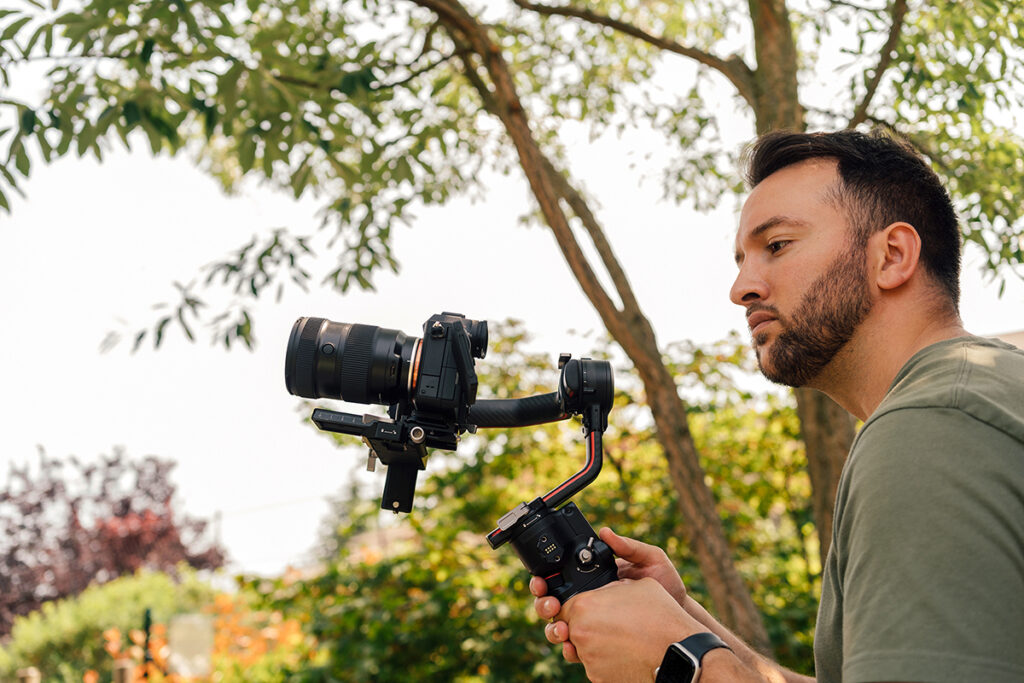
Microphone
Good audio quality is crucial in videography, as poor sound can detract from even the most visually stunning footage. Investing in an external microphone can significantly improve the sound quality of your videos, capturing clear and crisp audio that enhances your overall production value.
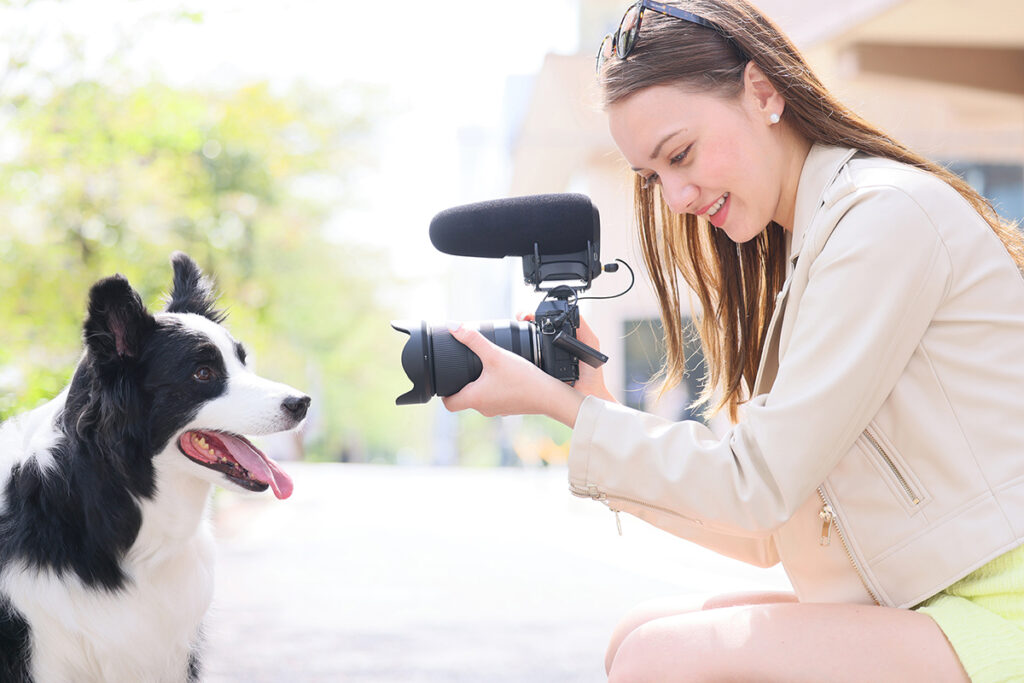
Lighting
Proper lighting is key to enhancing the visual quality of your videos. While natural light is a great resource, investing in additional lighting equipment such as LED panels or softbox lights can make sure your subjects are well-lit in any environment. Good lighting helps set the mood and tone of your video, making it more engaging and visually appealing.

Basic Videography Techniques
Developing a strong foundation in videography techniques for beginners is crucial to creating compelling and professional-quality videos. Here are some essential basic videography tips to help you get started:
Composition
Great composition is the backbone of visually appealing videography. One fundamental principle is the Rule of Thirds. Imagine your frame divided into a 3×3 grid. Place your subject along these lines or at their intersections to create balanced and engaging shots. This technique helps guide the viewer’s eye and enhances the overall aesthetic of your video.
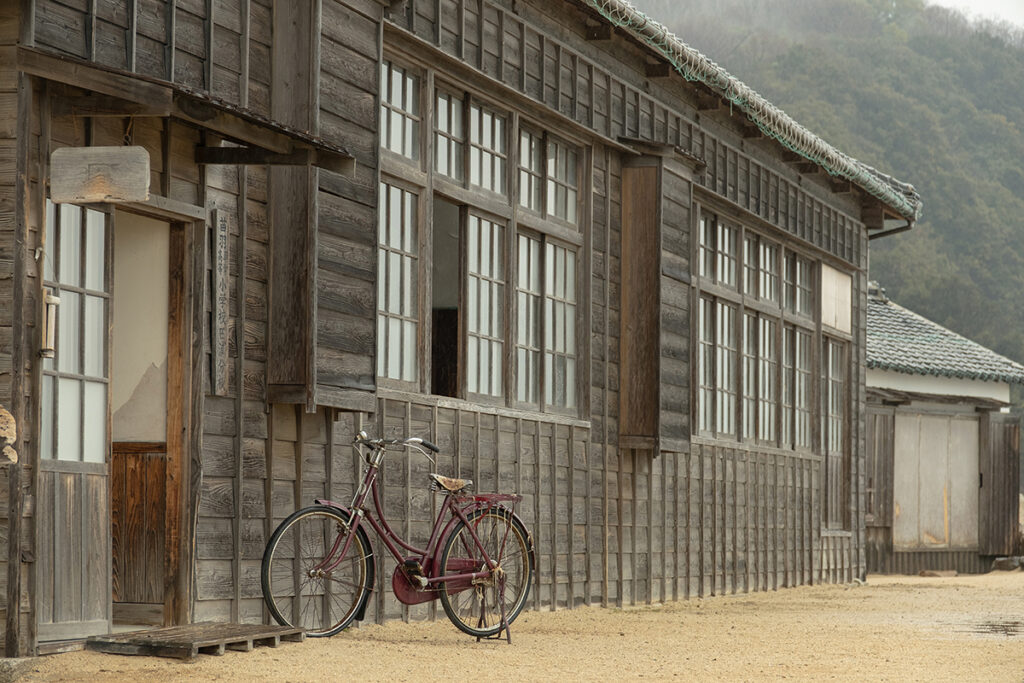
Camera Movement
The way you move your camera can greatly influence the feel of your video. Experiment with different types of movements, like pans (horizontal), tilts (vertical), and zooms. Smooth and deliberate movements are key to maintaining a professional look. For example, a slow pan can add drama and reveal context, while a gentle zoom can focus attention on a subject. Avoid abrupt or jerky movements that can distract or disorient your audience.
Lighting
Lighting is one of the most critical aspects of videography. Natural light is an excellent resource, especially during the Golden Hour—the first and last hours of sunlight—when the light is soft and warm, casting a beautiful glow on your subjects. When shooting indoors, use soft lighting to avoid harsh shadows and create a flattering look. LED panels and softbox lights can be great investments to ensure consistent and high-quality lighting.

Manual Focus
While autofocus can be convenient, especially for moving subjects, manual focus gives you greater creative control. By manually adjusting the focus, you can precisely control what’s sharp in your frame, allowing you to highlight specific elements and create a more cinematic look. This is particularly useful for creative shots, such as rack focus, where you shift focus from one subject to another within the same shot.
Storytelling
At its core, videography is about storytelling. Every great video has a clear narrative structure with a beginning, middle, and end. Before you start shooting, plan your shots and sequences to create a compelling story that engages your audience. Think about the message you want to convey and how you can visually communicate it through your shots, transitions, and editing.
Embarking on your videography journey can be incredibly fulfilling. By understanding the basics of videography and investing in the right basic videography equipment, you’re setting yourself up for success. Remember, practice makes perfect. Don’t be afraid to experiment with different techniques and equipment to find what works best for you. With Tamron’s range of high-quality lenses, you’ll have the tools you need to create stunning videos. Happy filming!
